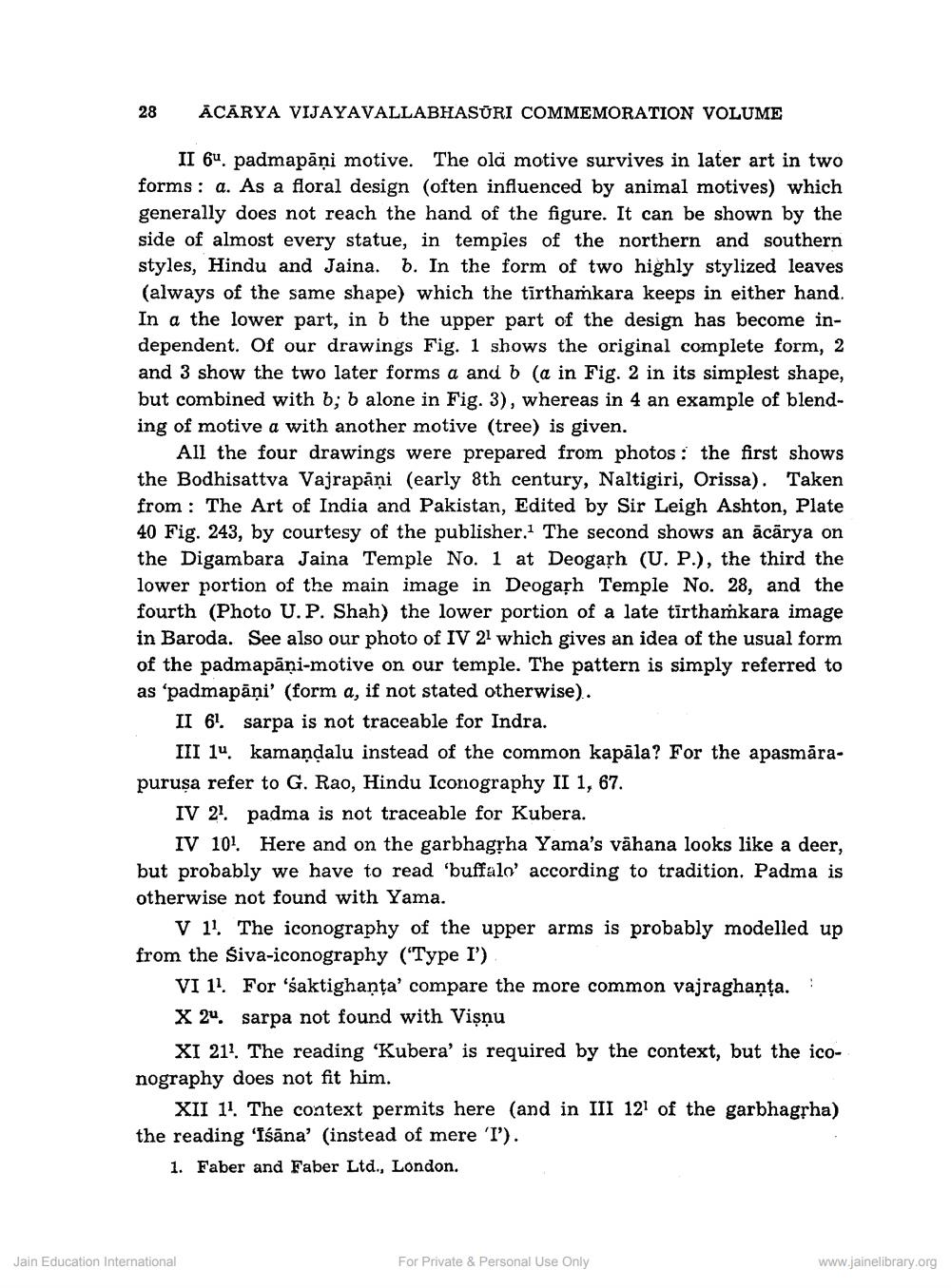________________
28
ĀCĀRYA VIJAYAVALLABHASŪRI COMMEMORATION VOLUME
II 64. padmapāņi motive. The ola motive survives in later art in two forms: a. As a floral design (often influenced by animal motives) which generally does not reach the hand of the figure. It can be shown by the side of almost every statue, in tempies of the northern and southern styles, Hindu and Jaina. b. In the form of two highly stylized leaves (always of the same shape) which the tirthamkara keeps in either hand. In a the lower part, in b the upper part of the design has become independent. Of our drawings Fig. 1 shows the original complete form, 2 and 3 show the two later forms a and b (a in Fig. 2 in its simplest shape, but combined with b; b alone in Fig. 3), whereas in 4 an example of blending of motive a with another motive (tree) is given.
All the four drawings were prepared from photos: the first shows the Bodhisattva Vajrapāņi (early 8th century, Naltigiri, Orissa). Taken from: The Art of India and Pakistan, Edited by Sir Leigh Ashton, Plate 40 Fig. 243, by courtesy of the publisher. The second shows an ācārya on the Digambara Jaina Temple No. 1 at Deogarh (U. P.), the third the lower portion of the main image in Deogarh Temple No. 28, and the fourth (Photo U.P. Shah) the lower portion of a late tirthamkara image in Baroda. See also our photo of IV 21 which gives an idea of the usual form of the padmapāņi-motive on our temple. The pattern is simply referred to as 'padmapāņi' (form a, if not stated otherwise).
II 6. sarpa is not traceable for Indra.
III 14. kamandalu instead of the common kapāla? For the apasmārapuruşa refer to G. Rao, Hindu Iconography II 1, 67.
IV 21 padma is not traceable for Kubera.
IV 101. Here and on the garbhagsha Yama's vähana looks like a deer, but probably we have to read 'buffalo' according to tradition. Padma is otherwise not found with Yama.
V 11 The iconography of the upper arms is probably modelled up from the Siva-iconography ("Type I')
VI 11. For 'saktighanța' compare the more common vajraghanța.: X 24. sarpa not found with Vişnu
XI 21. The reading 'Kubera' is required by the context, but the iconography does not fit him.
XII 11 The context permits here (and in III 121 of the garbhagyha) the reading 'Iśāna' (instead of mere 'I').
1. Faber and Faber Ltd., London.
Jain Education International
For Private & Personal Use Only
www.jainelibrary.org




